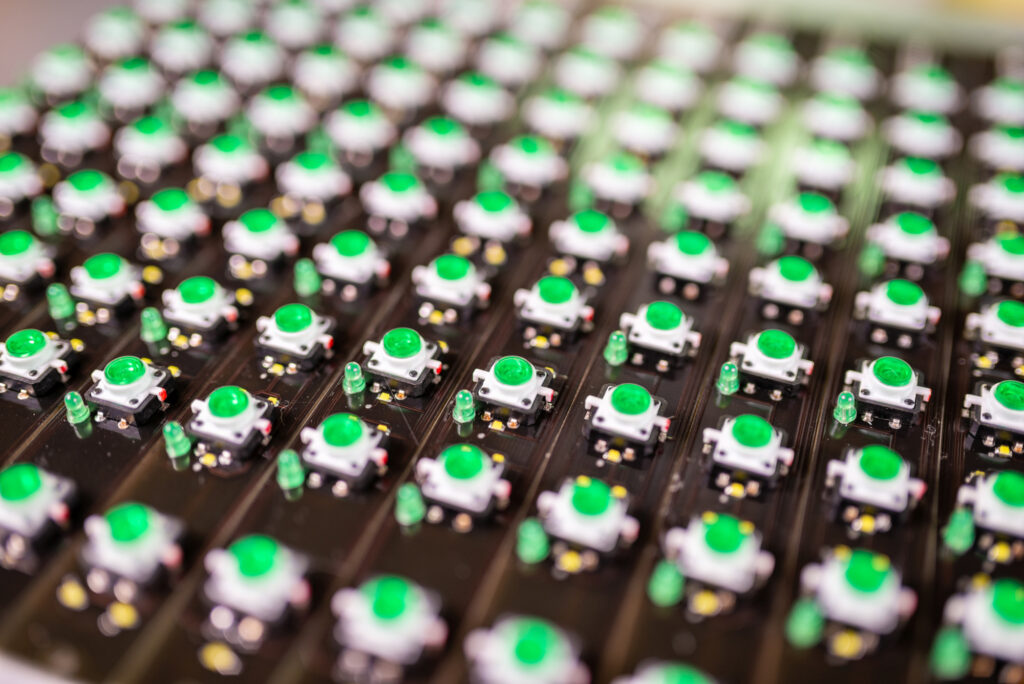Light Emitting Diodes (LEDs)
Unveiling the Wonders of Light Emitting Diodes (LEDs)
In the realm of lighting technology, Light Emitting Diodes (LEDs) have emerged as the shining stars, revolutionizing illumination with their energy efficiency, longevity, and versatility. This article dives into the captivating world of LEDs, exploring their history, working principles, applications, and the countless ways they are transforming our lives.
A Brief History of LEDs
The roots of LEDs can be traced back to the early 20th century when scientists discovered electroluminescence, a phenomenon in which certain materials emit light when an electric current passes through them. However, it wasn’t until the 1960s that the first practical LED was developed. Nick Holonyak Jr., a scientist at General Electric, created the first visible LED using gallium arsenide phosphide (GaAsP) as the semiconductor material.
Working Principles of LEDs
At the heart of every LED lies a semiconductor chip, typically made of materials like gallium arsenide (GaAs), gallium nitride (GaN), or indium gallium nitride (InGaN). These materials have unique properties that allow them to emit light when an electric current is applied.
When a forward voltage is applied across the LED, electrons and holes recombine within the semiconductor material. This process releases energy in the form of photons, creating visible light. The color of the emitted light depends on the specific materials used and the energy bandgap of the semiconductor.
Advantages of LEDs
- Energy Efficiency: LEDs are renowned for their exceptional energy efficiency. Unlike traditional incandescent bulbs that convert most of the electrical energy into heat, LEDs convert a significant portion of energy into light, resulting in lower energy consumption and reduced electricity bills.
- Longevity: LEDs boast an impressive lifespan compared to traditional lighting technologies. With an average lifespan of 25,000 to 50,000 hours, LEDs outlast incandescent bulbs by a significant margin. This longevity translates into reduced maintenance and replacement costs.
- Durability: LEDs are solid-state devices, making them highly resistant to shock, vibrations, and environmental factors. They do not contain fragile filaments or glass components, making them more durable and suitable for various applications.
- Instantaneous Lighting: LEDs offer instant illumination, reaching full brightness almost instantly upon power-up. Unlike fluorescent lights, there is no warm-up period required, providing immediate light when needed.
Applications of LEDs
- Lighting: LEDs have revolutionized the lighting industry, providing energy-efficient alternatives for residential, commercial, and industrial applications. They can be found in homes, offices, streetlights, stadiums, and even in architectural lighting for their flexibility in creating various colors and effects.
- Displays and Signage: LEDs are widely used in electronic displays and signage. Their high brightness, low power consumption, and ability to display vibrant colors make them ideal for large outdoor billboards, digital screens, and indoor display panels.
- Automotive Lighting: LEDs have transformed automotive lighting due to their longevity, energy efficiency, and compact size. They are commonly used in headlights, taillights, brake lights, and interior lighting, enhancing visibility and safety on the road.
- Consumer Electronics: LEDs are omnipresent in consumer electronics, adorning our televisions, smartphones, laptops, and smartwatches. Their slim profiles, low power requirements, and customization options have made them a popular choice for backlighting and indicator lights.
The Future of LEDs
Light Emitting Diodes (LEDs) have undoubtedly transformed the world of lighting with their energy efficiency, longevity, and versatility. From their humble beginnings in the 1960s, LEDs have evolved to become the preferred lighting technology for a wide range of applications.
With their remarkable energy efficiency and extended lifespan, LEDs offer significant advantages over traditional lighting technologies. They contribute to reduced energy consumption, lower electricity bills, and minimized environmental impact. The durability and instantaneous lighting capabilities of LEDs further enhance their appeal, making them an ideal choice for various settings.
LEDs have found their place in residential, commercial, and industrial lighting, as well as in electronic displays, automotive lighting, and consumer electronics. Their adaptability, high brightness, and vibrant color options have opened up new possibilities for creative lighting designs and immersive visual experiences.
Looking ahead, the future of LEDs appears promising. Ongoing research and development efforts aim to enhance efficiency, explore new materials, and unlock innovative applications. Organic LEDs (OLEDs) hold great potential for flexible, transparent displays and lighting solutions, promising further advancements and exciting possibilities.
As we bask in the glow of LEDs, it’s clear that they have revolutionized the way we illuminate our world. With their efficient and sustainable lighting capabilities, LEDs are not only brightening our lives but also paving the way for a greener and more energy-conscious future.

